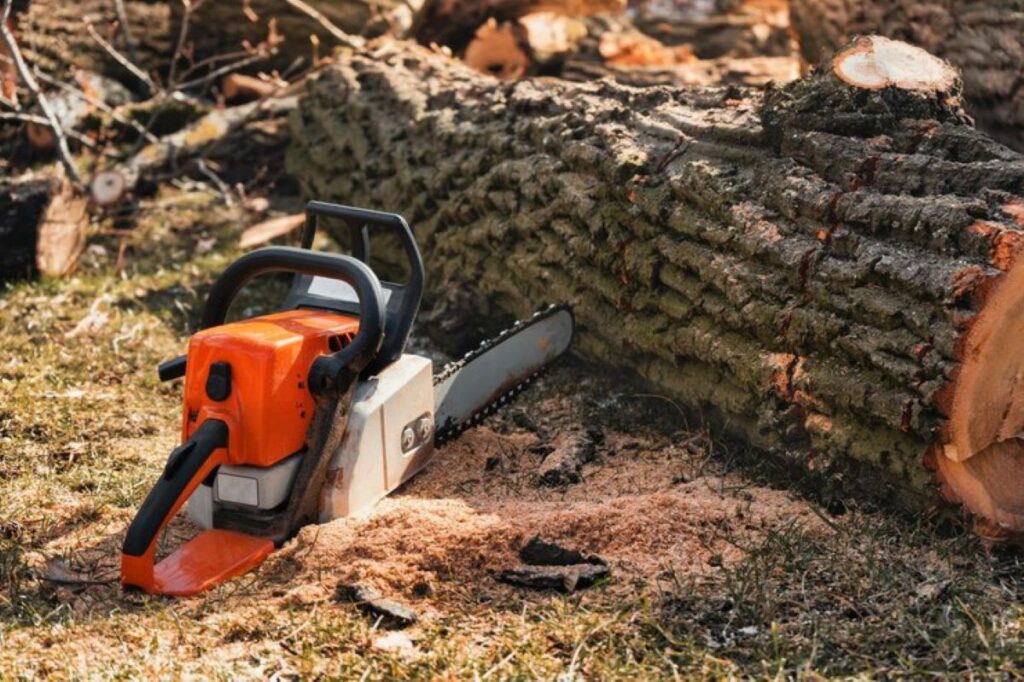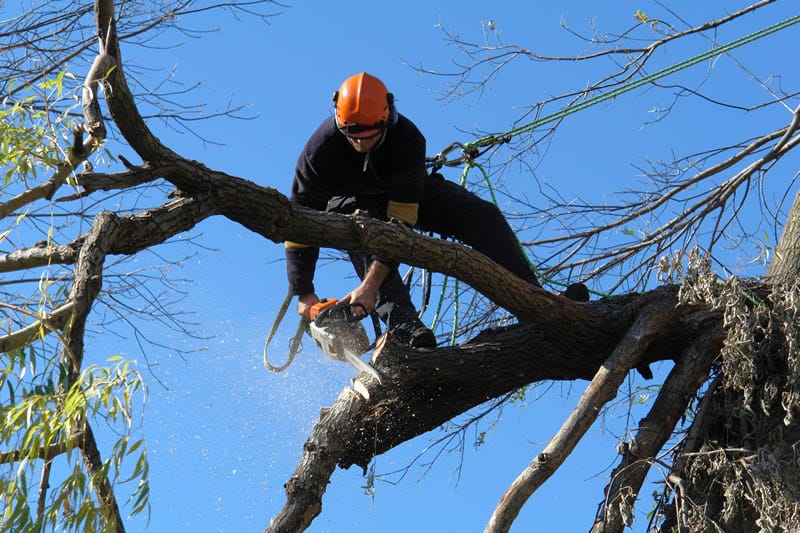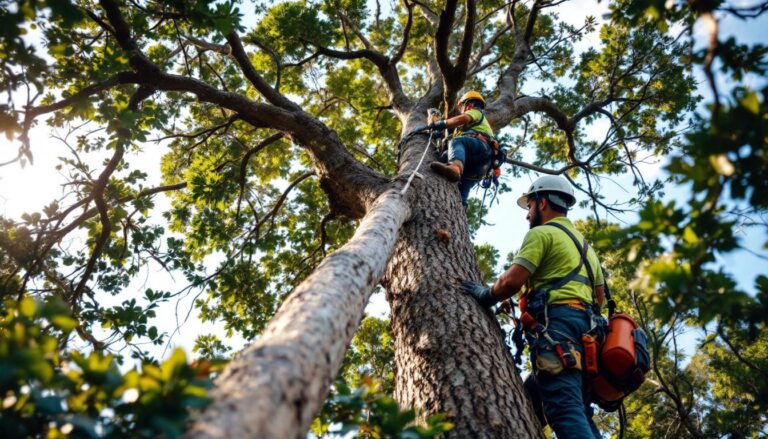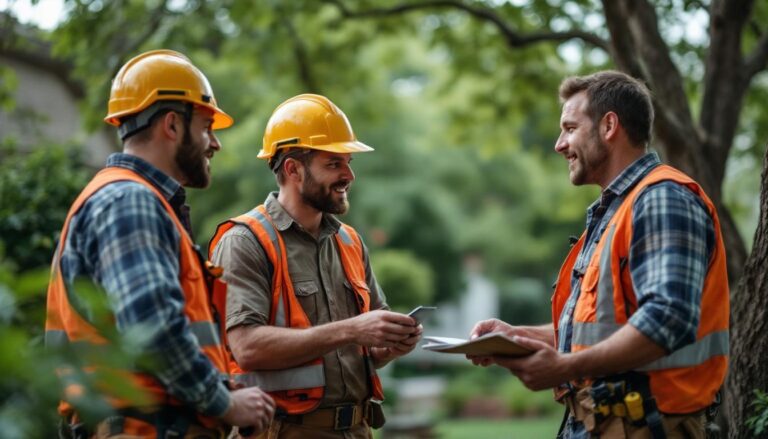When it comes to maintaining the beauty and safety of your property, finding reliable tree removal services is crucial. Trees can enhance the landscape but can also pose risks if they become damaged or diseased. Knowing how to identify a trustworthy service can save you time and money while ensuring the health of your outdoor space.
Understanding Tree Removal Services
Tree removal services specialize in cutting down trees that are dead, dying, or pose safety risks to your home and property. These professionals are equipped with the skills, tools, and expertise to handle trees safely and efficiently.
What is Tree Removal?
Tree removal involves the process of cutting down a tree and tree stump removal and roots if required. This is typically conducted by trained professionals who understand the complexities of tree biology and structural integrity.
Aside from simply cutting down a tree, the removal process may also involve strategies to minimize damage to surrounding plants and property. In many cases, tree removal is essential for maintaining the safety of a yard, especially if trees threaten nearby structures, utilities, or other trees. The process often requires careful planning and execution to ensure that the tree is removed in a manner that is safe for both the workers and the environment.
Moreover, tree removal can sometimes involve additional considerations such as local regulations and permits. Many municipalities have specific guidelines regarding tree removal, especially for larger or heritage trees. It’s vital for homeowners to consult with tree removal experts who are familiar with these regulations to avoid potential fines or legal issues.
Why Might You Need Tree Removal Services?
There are several reasons why you may need tree removal services. Common scenarios include:
- Health Issues: Trees that are infested with pests or diseases may require removal to prevent them from spreading to healthy plants.
- Safety Hazards: Trees that are leaning dangerously or have large branches that could fall pose serious risks to people and property.
- Construction Projects: Sometimes, trees need to be removed to make way for new construction or landscaping projects.
- Overcrowding: In some cases, trees may be too close together, stunting growth and health; removing some can help the others thrive.
In addition to these common reasons, tree removal may also be necessary due to environmental changes. For instance, if a tree is situated in an area that is prone to flooding or erosion, its roots may become compromised, leading to instability. Furthermore, trees that are located near power lines can create hazards during storms, making their removal a proactive safety measure. Understanding the broader implications of tree health and placement can help homeowners make informed decisions about their landscape.
Another important factor to consider is the potential for tree replacement after removal. Many homeowners opt to plant new trees in the same area to enhance their landscape and contribute positively to the environment. Choosing the right species of tree can provide shade, improve air quality, and support local wildlife, making tree removal not just a matter of safety, but also an opportunity for ecological restoration and beautification of the property.
Factors to Consider When Choosing a Tree Removal Service
Choosing the right tree removal service is crucial to ensure the work is done safely and professionally. Here are the key factors to consider:
Reputation and Reviews
Before selecting a tree removal service, it’s essential to check their reputation. Look for online reviews, testimonials, and case studies that can provide insights into their work quality.
Pay attention to platforms like Google, Yelp, and social media where past customers share their experiences. A service with consistently positive feedback indicates reliability and professionalism. Additionally, consider asking friends, family, or neighbors for recommendations, as personal experiences can often lead you to trustworthy services that may not have a strong online presence.
Pricing and Estimates
The cost of tree removal can vary significantly based on a variety of factors, including tree size, location, and complexity of the job. It’s wise to obtain multiple estimates from different companies to ensure you’re getting a fair price.
Be sure to ask what is included in the estimate, such as cleanup, stump removal, and other potential fees, to avoid unexpected charges later on. Furthermore, inquire about payment options and whether they offer any financing plans, as this can make the service more accessible if the costs are higher than anticipated.
Licensing and Insurance
Ensure that the tree removal service you choose is licensed and insured. This is crucial as it protects both you and the workers in case of accidents or damage during the removal process.
Ask to see their certificate of insurance and confirm that it covers liability and workers’ compensation. This step is essential to ensure that you are not financially responsible for injuries or damage that may occur. Additionally, check if the company follows local regulations and guidelines regarding tree removal, as this can further safeguard you from potential legal issues and ensure that the work is performed in an environmentally responsible manner.
Experience and Expertise
Experience plays a vital role in the quality of tree removal services. A company with a long history in the industry is likely to have encountered a wide range of scenarios and challenges, equipping them with the skills to handle your specific needs effectively. Inquire about the qualifications of their team members, including any certifications in arboriculture or tree care, which can indicate a higher level of expertise.
Moreover, consider asking about the techniques and equipment they use for tree removal. Advanced machinery and methods can significantly reduce the risk of damage to surrounding property and ensure a more efficient process. A knowledgeable service provider will also be able to offer advice on tree health and maintenance, which can be beneficial for your landscape in the long run.

The Process of Tree Removal
Understanding the tree removal process can help you feel more comfortable allowing professionals onto your property. Here’s what typically happens:
Initial Assessment
During the initial assessment, tree removal professionals will evaluate the tree and surrounding area. They will look for signs of disease, stability, and proximity to structures and utility lines.
They may also discuss potential options with you, such as whether the tree can be pruned instead or if it should be removed entirely. This consultation ensures that you both are in agreement on the next steps.
The Removal Process
The actual removal process generally involves several steps, including:
- Preparation: The area is cleared, and any nearby obstacles are noted to ensure safety.
- Cuts: Proper cuts are made at various points to control the direction the tree falls.
- Felling: The tree is carefully felled, ensuring it falls in an area that minimizes damage to surrounding property.
After the tree has been cut down, workers will proceed to remove the branches and trunk, often using specialized equipment.
Post-Removal Cleanup
After a tree is removed, cleanup is essential. This may include chipping branches and hauling away debris. Additionally, stump grinding may be performed to remove the tree’s base, preventing future growth and allowing for replanting.
Good tree removal services will leave your property tidy and free from any remnants of the tree, making it easier for you to plan your landscaping or construction projects next. Moreover, they often provide options for recycling the wood, which can be repurposed for mulch or even firewood, adding an eco-friendly aspect to the removal process. This not only minimizes waste but also allows you to benefit from the tree in a different form.
Furthermore, many tree removal companies offer consultations on how to best utilize the newly available space. This could involve suggestions for planting new trees, installing garden beds, or even creating outdoor living spaces. Their expertise can help you envision a transformed landscape, ensuring that the removal of the tree enhances the overall aesthetic and functionality of your property.
Safety Measures for Tree Removal
Tree removal can be hazardous work, so it is important for both service providers and property owners to understand and prioritize safety measures. This includes various precautions throughout the process.
Precautions to Take Before Tree Removal
Before any tree removal work begins, certain precautions should be taken, such as:
- Establishing a safe perimeter around the tree’s drop zone to keep people and pets clear of the area.
- Checking for any nearby power lines that could complicate the removal process.
- Obtaining any necessary permits for tree removal as mandated by local regulations.
In addition to these precautions, it is also crucial to assess the tree’s condition and surrounding environment. This involves examining the tree for signs of disease or instability, which could affect how it falls. Furthermore, understanding the wind direction and weather conditions can significantly influence the safety of the operation. A thorough site assessment allows for a more informed approach, ensuring that all potential hazards are identified and mitigated before work begins.
Safety Equipment Used During Tree Removal
Tree removal professionals are equipped with various safety gear to protect themselves during the job. Common items include:
- Hard hats to protect against falling limbs.
- Safety goggles to shield eyes from debris.
- Gloves for grip and protection.
- Steel-toed boots to protect feet during heavy lifting.
- Harnesses and ropes for climbing and securing loads when necessary.
In addition to personal protective equipment (PPE), tree removal teams often utilize specialized tools designed to enhance safety and efficiency. For example, chainsaws equipped with safety features such as chain brakes can prevent accidents during operation. Additionally, using ropes and pulleys can help control the descent of large branches, reducing the risk of injury to workers and damage to property. Training in the proper use of this equipment is essential, as it ensures that all team members are prepared to respond to emergencies and operate tools safely.
Choosing a service that prioritizes safety ensures that the job is completed without accidents or injuries.
Click here to get how much a tree removal cost.
Frequently Asked Questions About Tree Removal Services
If you’re considering hiring a tree removal service, you may have a few questions. Here are some common inquiries:
How Long Does Tree Removal Take?
The time it takes to remove a tree can vary depending on tree size, location, and complexity of the job. Generally, a small tree can be removed in a couple of hours, while larger trees may take half a day or more, especially if they require detailed cleanup.

Can I Remove a Tree Myself?
While some homeowners are tempted to remove trees themselves, it is generally not advisable. Tree removal can be dangerous, especially if the tree is large or near structures or power lines. Hiring professionals ensures the job is completed safely and efficiently.
When is the Best Time for Tree Removal?
The best time for tree removal often depends on the type of tree and its condition. Generally, it’s recommended to remove trees during late fall or winter when they are dormant. However, if a tree poses an immediate threat, it should be removed as soon as possible, regardless of the season.
In conclusion, finding a reliable tree removal service near you requires careful consideration of various factors, including their reputation, pricing, and safety practices. By understanding the process and potential issues associated with tree removal, you can make an informed decision that enhances your property’s safety and aesthetics.



